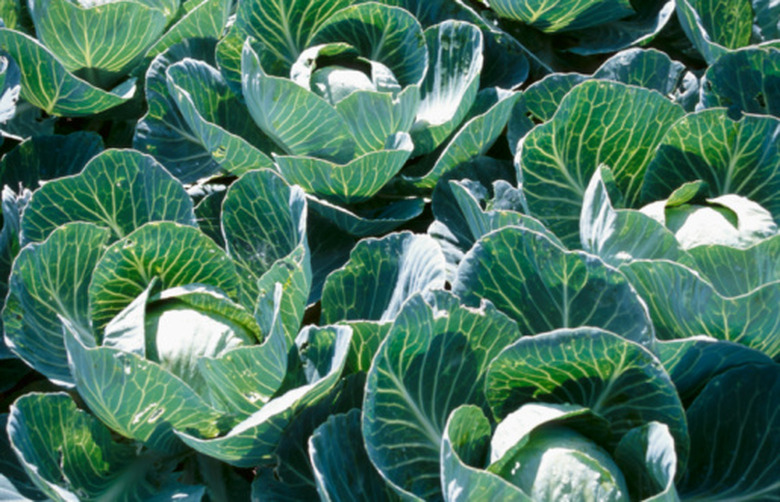Home Remedies For Getting Rid Of The Bugs On Cabbage Plants
We may receive a commission on purchases made from links.
The cabbages in your vegetable garden are enticing to a handful of insect pests that can injure the plants. The first step in combating the issue is to identify the bug that is attacking your cabbage. Using a home remedy to get rid of the bug will be cost-effective and safer than commercial chemical insecticides.
Aphids on Cabbage Plants
Aphids on Cabbage Plants
Aphids are small, soft-bodied insects with mouthparts that suck the juices from plants. Almost every species of plant has one or more aphid populations that feed on it. When aphids attack cabbage plants, they can leave the plant weakened, damaged, and susceptible to disease and other bug invasions.
Control aphids by regular monitoring. When there is only a small population, it is fairly easy to spray them off with a strong burst of hose water. Soldier beetles, lady beetles, and lacewings are all aphid predators and can do the work for you. It's a good idea to install companion plants near the cabbages that will attract these natural predators of aphids. Two to try: zinnias and mint plants.
For a homemade spray to fight aphids, mix 2 teaspoons of dish soap in a gallon of water. This often takes care of the aphids. However, if insecticides are needed, mix insecticidal soap or horticultural/neem oil with water. These products kill by smothering the aphids so be sure to apply them to all sides of the leaves.
Cabbage Worms on Cabbage Plants
Cabbage Worms on Cabbage Plants
Cabbage worms — also known as imported cabbageworms — can invade your cabbage plants. These worms are the velvety green larvae of cabbage white butterflies that lay eggs on the underside of cabbage leaves. These critters will happily chow down on the bases of cabbage and are hard to spot. They feed on all parts of the foliage and eventually can leave plants with only stems.
Again, your first attempts should not incorporate chemicals. If there are only a few worms, simply pick them off the plant, and squish them or move them to a different location.
Folk remedies to get rid of these plants include sprinkling the wet leaves with rye flour, which dehydrates them, or cornmeal, which makes them swell and die. If you need something stronger, spray with Bt (Bacillus thuringiensis var. kurstaki) every few weeks to control the pests.
Cabbage Loopers on Cabbage Plants
Cabbage Loopers on Cabbage Plants
Cabbage loopers, the larval stage of the cabbage moth, are another type of caterpillar that likes to eat cabbage plants. You can recognize them by their looping movement, since they move by arching the middle portion of their body and pulling their rear end forward. These caterpillars are smooth-skinned and green with a white stripe on each side. They also have two pairs of leglike appendages in the middle of the abdomen.
Loopers chew holes in cabbage leaves and bore into both the heads and the leaves. They have a number of important natural enemies, including the egg-parasitic wasp, the various larval-parasitic wasps, and a parasitic tachinid fly. Don't use broad-spectrum insecticides in the garden since they will take out these predators. If insecticide application is warranted, use the caterpillar-specific Bacillus thuringiensis to avoid damaging natural enemy populations.
